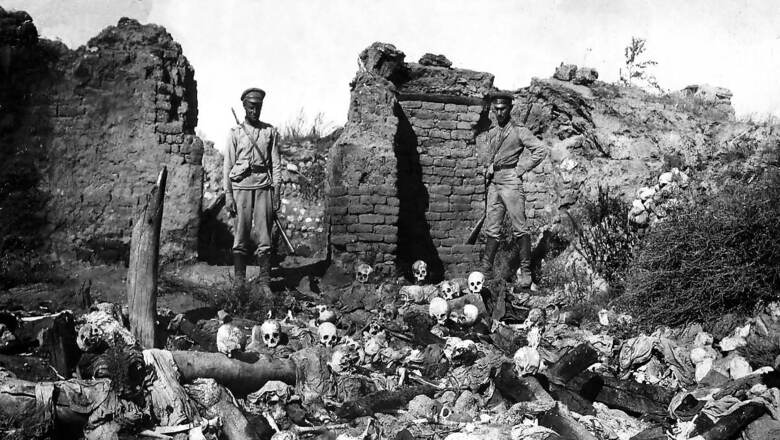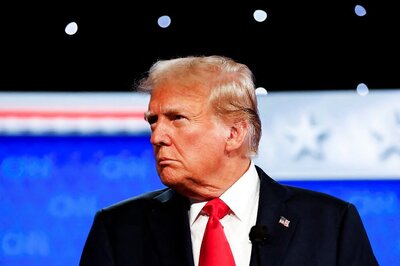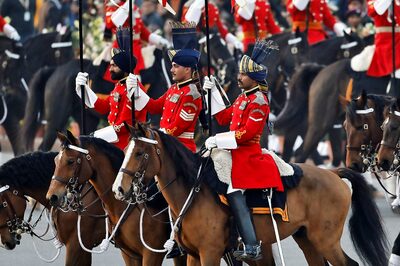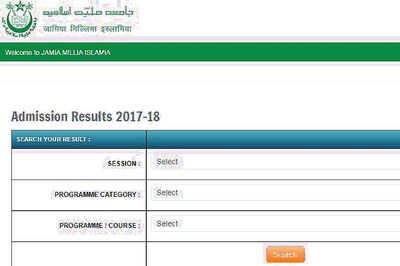
views
In the words of British writer Annie Besant, “Hinduism is the soil into which India’s roots are stuck, and torn out of that, she will inevitably wither as a tree torn out from its place. And if Hindus do not maintain Hinduism, who shall save it? If India’s own children do not cling to her faith, who shall guard it? India alone can save India, and India and Hinduism are one.”
Hindus and Armenians share several striking similarities. Both cultures bear the weight of ancient civilisations, enduring centuries of history on their resilient shoulders. Each has confronted existential threats from expansionist empires harbouring genocidal intentions, yet has managed to persevere against the odds. Both boast revolutionary heroes, such as the Chapekar brothers and Soghomon Tehlirian, who bravely sought retribution against the oppressors of their people.
Moreover, both communities have suffered territorial losses, witnessing the creation of new nations on lands once integral to their civilisations. They have also experienced the unsettling reality of historical enemies aligning against them. In addition, both Hindus and Armenians have found themselves confronting Western indifference and ignorance, bordering on Hinduphobia and Armeniophobia, respectively, in the contemporary world.
Those who harbour animosity towards our existence exhibit striking parallels amongst themselves. Their intolerance is palpable, mirroring a worldview wherein the dominance of their community is deemed inevitable. They display a resolute unresponsiveness to peace proposals, often resorting to warmongering tactics. Furthermore, they demonstrate a preposterous tendency to distort history, selectively discarding facts that do not align with their narratives.
The Strength of Acceptance: Hinduism’s Legacy of Tolerance
In ancient times, long before Christianity had made its way to Europe, the apostles of Jesus Christ journeyed to distant lands, including Armenia and India, to preach the gospel. Among them, Bartholomew and Thaddeus introduced Christianity to Armenia, while Thomas the Apostle brought the teachings of Christ to India. Notably, within the global spiritual movement of Ananda, founded on the principles of Swami Paramhansa Yogananda, a revered Hindu Yogi, Jesus Christ holds a central place of honour. His portrait adorns the Altar of Ananda, and devotees pay daily homage through prayers. In his renowned work, ‘Autobiography of a Yogi’, Swami Yogananda writes in Chapter 33 about the Mahavatar, a prominent Hindu Yogi also known as Babaji, affirming, “The Mahavatar is in constant communion with Christ.” According to Ananda, Christ appeared to the revered yoga master, Babaji, entreating him to dispatch a messenger to the Western world to disseminate the teachings of original Christianity.
By nature, Hindus have long exhibited a remarkable tolerance, if not outright acceptance, of diversity, owing to the inherent variety within their own faith. This inclusivity has made it relatively easy for them to embrace Armenians within their communities. Over time, Armenian settlements flourished in various Indian cities such as Agra, Gwalior, Delhi, Narwar, Surat, Calcutta, Bombay, Madras, and beyond.
However, the Turkic rulers of India, like Jehangir, did not share the same tolerant outlook as the Hindu populace they governed. According to Mesrovb Jacob Seth’s account in his book ‘History of Armenians in India’, there is documentation of Jehangir’s endeavour to coerce two Armenian Christian children into converting to Islam. Despite facing pressure, the two brothers, Zul-Qarnain and Iskanderus, remained steadfast in their resistance to conversion. Even after being forcibly circumcised in 1606 on Jehangir’s orders, at ages fourteen and eleven, respectively, they adamantly refused all attempts to sway them from their Christian faith.
The Struggle Against Prejudice: Targeting Hindus and Armenians
Across the annals of history, Hindus and Armenians have faced orchestrated hate campaigns by their adversaries. The dilapidated Armenian churches in Eastern Turkey and Azerbaijan, as well as the ruined Hindu temples in Pakistan, serve as stark reminders of the animosity directed towards us, now entrenched within their foreign policy agendas. Turkish, Azerbaijani, and Pakistani pseudo-intellectuals have perpetuated historical negationism, fabricating narratives devoid of credible evidence, to sever the ties between Armenians and Hindus with their ancestral lands.
The rebranding of well-documented Armenian churches as Caucasian Albanians and the appropriation of Udi Christian heritage in Azerbaijan are alarming developments. According to a report by the Cornell-led Caucasus Heritage Watch (CHW), decades of high-resolution satellite imagery document the systematic destruction of Armenian cultural heritage in the Nakhchivan Autonomous Republic of Azerbaijan since the late 1990s. Likewise, a report commissioned by Dr Shoaib Suddle and presented to Pakistan’s Supreme Court underscores the deplorable condition of temples and Hindu places of worship in Pakistan, as detailed in a Dawn report.
Shedding Light on Dark Pasts: Hindu and Armenian Genocide
Despite the staggering loss of at least 664,000 and potentially up to 1.2 million Armenians during the genocide orchestrated by the Ottoman Turks, Turkish intellectuals faced vehement criticism when they issued an online apology for the Armenian Genocide in 2008. Their act was met with fierce opposition from Turkish Prime Minister Recep Tayyip Erdogan, as reported by The Guardian newspaper.
In India, the genocide of Kashmiri Hindus took place and has been recognised by the US-based non-profit International Commission for Human Rights and Religious Freedom (ICHRRF). It has recognised the 1989-1991 atrocities against Kashmiri Hindus as an act of genocide. As per the United Nations Refugee Agency, approximately 300,000 Kashmiri Pandits (Hindus) are reported to have left the region due to constant persecution from the Jammu Kashmir Liberation Front (JKLF) and other militant groups, like Hizbul Mujahideen (HM). Hizbul Mujahideen is designated as a terrorist organisation by multiple countries, including India, the United States, and the European Union.
Regional Alliances and Anti-India Sentiments: Turkey, Azerbaijan and Pakistan’s Unified Stand
Turkey, Azerbaijan, and Pakistan have demonstrated a unified stance against Armenia while concurrently displaying anti-India sentiments on the global stage. Erdogan, who refuses to recognise the Armenian Genocide and aligns with the genocidal ambitions of Azerbaijani President Ilham Aliyev, underscored in the Pakistani parliament, as per reports from the Turkish news outlet Daily Sabah, that “Today, the issue of Kashmir is as pertinent to us as it is to you (Pakistanis)” and “there is no disparity between Gallipoli and Kashmir.” Erdogan has openly endorsed and actively supported Pakistan, which, reciprocally, lends support to Islamist terrorist factions in Kashmir. These groups perpetrate violence not only against Hindus but also Muslims, epitomising the intolerant worldview espoused by Turkey, Azerbaijan, and Pakistan.
According to a report from the US Commission on International Religious Freedom, Pakistani education curricula propagate animosity towards Hindus, with a focus on historic revisionism aimed at exalting Islamic civilisation and disparaging the contributions of religious minority communities. Similarly, Azerbaijan, like its ally Pakistan, fosters hostility towards its adversary, Armenia. As reported by Faustin Vincent in Le Monde, Azerbaijan recently reissued maps of Nagorno-Karabakh with streets named after Enver Pasha, a Turkish leader associated with the 1915 Armenian Genocide. Despite Baku’s assertions to the international community about respecting the rights of Armenians in the region, his actions speak otherwise. Azerbaijan has consistently sought to undermine Armenian heritage and exacerbate tensions through inflammatory rhetoric targeting Armenians.
Navigating the Diplomatic Landscape
In the complex arena of international relations, mastering the art of diplomacy is paramount for fostering successful diplomatic relations. Effective diplomatic engagement requires a delicate balance of strategy, communication, and negotiation. The art of international engagement requires finesse, foresight, and diplomacy. By adhering to these strategies, nations can cultivate robust diplomatic relations that contribute to global peace, stability, and prosperity.
It is now imperative for both Hindus and Armenians to awaken the West from its state of indifference and compel it to acknowledge the genocides perpetrated against their respective communities. The governments of India and Armenia must take the lead in this endeavour by formally recognising the genocides committed against Armenians and Hindus, respectively. Subsequently, they should engage in diplomatic efforts to encourage other nations to follow suit.
Furthermore, there is a pressing need for India, Armenia, and Greece to explore the possibility of forming a security alliance to address the escalating threats in their respective regions. These nations possess significant geostrategic advantages – India holds a prominent position in the Indo-Pacific region; Armenia is strategically located in the South Caucasus, serving as a potential gateway to Europe via Georgia; and Greece occupies a key position in the Eastern Mediterranean. By collaborating closely, these countries can effectively counteract the destabilising actions of Turkey, Azerbaijan, and Pakistan.
While advocating for peace in our regions and globally, we remain steadfast in safeguarding our national interests. Strengthening the bond between Hindus and Armenians is essential for promoting peace and stability in our regions and beyond. Hence, the importance of mastering the art of diplomacy in navigating the complexities of the global stage and fostering successful diplomatic relations is the need of the hour.
Arunansh B. Goswami is Advocate, Supreme Court of India; Sumit Kaushik, is PhD candidate, OP Jindal Global University. Views expressed in the above piece are personal and solely that of the author. They do not necessarily reflect News18’s views.




















Comments
0 comment